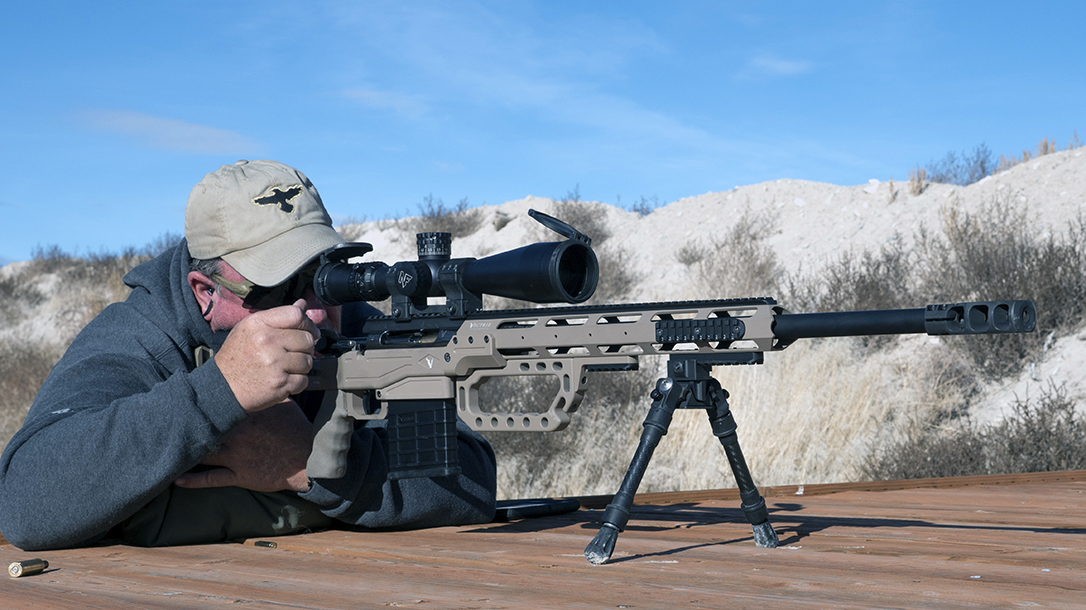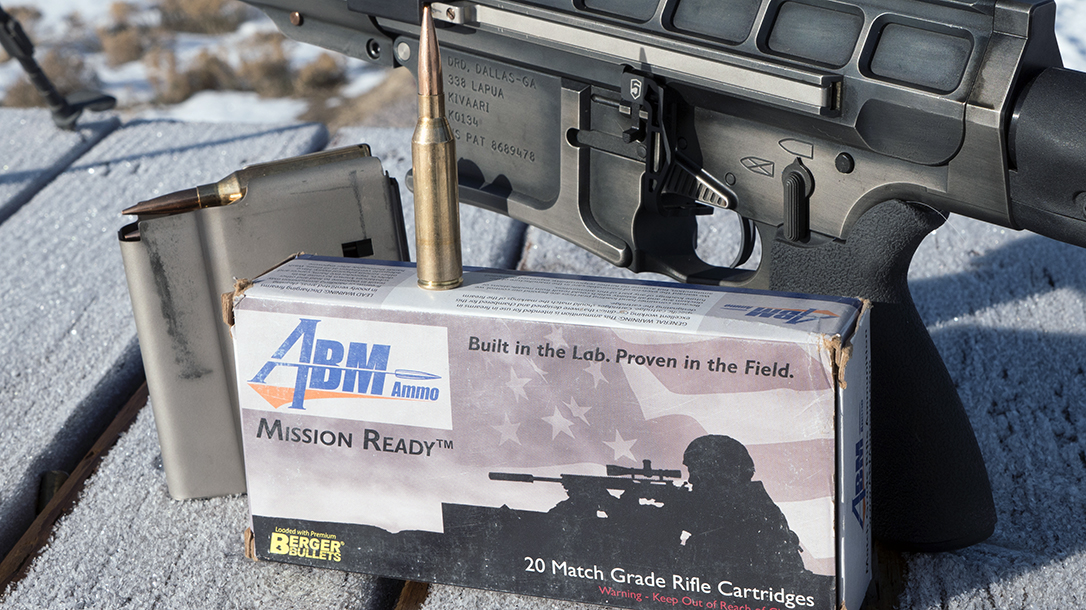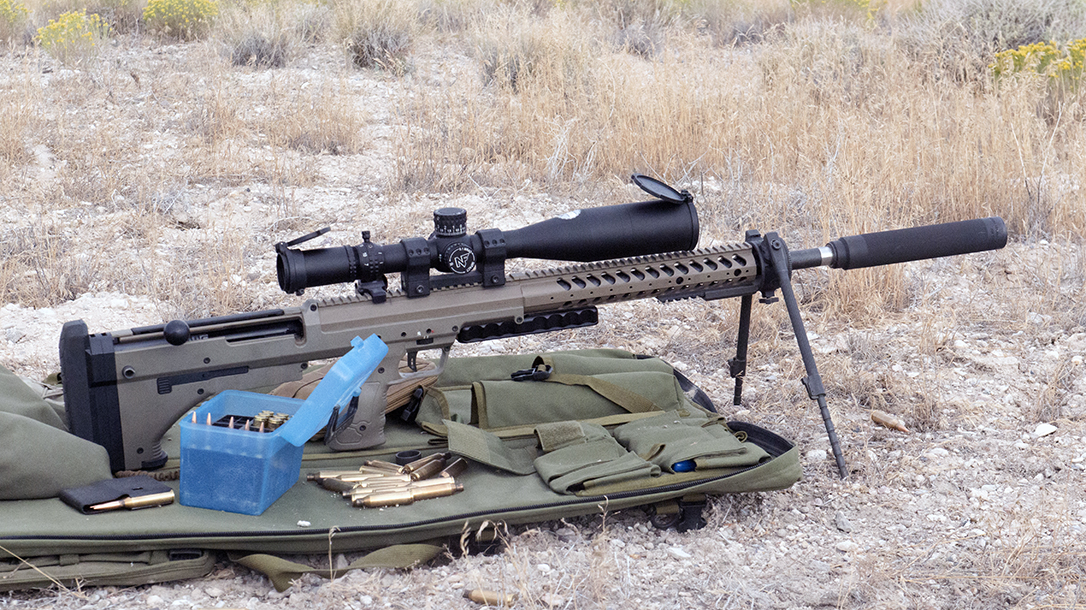Special Missions Units within the U.S. military are always looking outside the box for weapons, ammunition and gear. It’s a constant battle for our most specialized forces to adapt to the requirements of their missions. Much of what’s used today has come from their requests for equipment suited to their needs. In some cases, it comes from a request for information (RFI) and may even result in a formal contract. More often than not, it’s on a smaller scale, even at the unit level. Most of these requests stay pretty compartmentalized. Others, like what would become the Precision Sniper Rifle (PSR), drive the industry into a frenzy. Often, something unique comes out of all that hoopla. One such item is the .300 Norma Magnum, which was chosen as the Advanced Sniper Rifle Cartridge for special operations forces in 2016.
Magnum Force
During the PSR process, when the .338 Norma Magnum was causing quite the stir, a friend of mine, Mike Brown of Mike’s Gun Sales and Service, told me about a project Jimmy Sloan was working on. Jimmy was the creator of the .338 Norma Magnum, an improved cartridge optimized for the 300-grain Sierra MatchKing (SMK) bullet. Still of interest, it works very well in belt-fed and rotary machine guns.
Advertisement — Continue Reading Below
The newer .300 Norma Magnum cartridge is based on the .338 Norma, with the same case necked down to accept the .30-caliber bullets. An experienced precision rifle builder, Mike was about as excited as he ever gets about a new caliber. Why? Mostly to take advantage of the ever-improving and long-standing stability of .30-caliber bullets.
Berger and other manufacturers were making bullets with incredibly high ballistic coefficients (BCs) that could be pushed well over 3,000 fps without excessive chamber pressure. Fast .30-caliber rounds aren’t new, but this one allowed shooters to simply switch out their .338 Norma or .338 Lapua barrels and use the same action, bolt and so on.
300 Norma Mag
Preliminary ballistics testing showed that the .300 Norma Magnum equaled or bested the .338 out to 2,000 yards in every measure but energy on target. Using the Berger 230-grain hybrid boat-tail (HBT), it could even win that race with enough velocity. But, while it seemed excellent, there just wasn’t enough ammo available at the time for me to jump on board. That changed when my contacts assured me it was going to be chosen as the Advanced Sniper Rifle Cartridge in 2016.
Advertisement — Continue Reading Below
In short, the .300 Norma Magnum shoots flatter than the .338 Lapua with relatively light recoil, especially with 215-grain bullets. And while 24-inch barrels are the norm for this caliber, you can use shorter barrels with light bullets and still deliver at extreme distances. It works suppressed with .338- or .30-caliber suppressors rated for magnum pressures. Finally, and maybe most important, there are already .338 Lapua and .338 Norma semi-autos in service, and transitioning to the .300 Norma is relatively easy. Of course, this all sounds great, but I wanted to test a few of these platforms at serious ranges.
Four Test Guns
I used four different guns with .300 Norma Magnum barrels—three bolt actions and a semi-auto. First up was a Desert Tech (DT) SRS using a 25-inch, carbon-fiber-wrapped Proof Research barrel and a .338 suppressor. Additionally, the other bolt actions included a Barrett MRAD and a Victrix Armaments Scorpio with a 26-inch Benchmark barrel. The semi-auto was DRD Tactical’s Kivaari.
The Victrix Scorpio is equipped with an incredibly efficient muzzle brake, and I added an American Precision Arms (APA) Fat Bastard to both the MRAD and Kivaari. Then I installed a Nightforce 5-25x56mm ATACR F1 scope using the TMR reticle on the Victrix and MRAD, the 7-35x56mm ATACR with a Horus T3 reticle on the DT SRS, and a Bushnell 4.5-30x50mm XRS II using a Horus H59 reticle on the Kivaari.
Advertisement — Continue Reading Below
Ammunition for the .300 Norma Magnum is still a tad scarce and expensive. Factory rounds using 230-grain HBT bullets are the most common. Norma makes excellent ammunition, but this load is just a tad slow. ABM’s 215-grain HBTs are excellent but hard to get. Thankfully, DRD Tactical was kind enough to provide some ammo for testing. The rest were handloads using Berger 230-grain HBTs and Hornady 212-grain ELD-X and 225-grain ELD-M bullets in new Norma brass with Retumbo powder.
Going The Distance
I’ll start by saying that all four rifles were extremely accurate at the range. At close to 3,100 fps, my 230-grain Berger HBT handload produced the best group at 100 yards—just 0.5 inches—with the Victrix Scorpio. At 300 yards, the Desert Tech SRS clustered my 212-grain ELD-X rounds into 0.7 inches. Barrett’s MRAD seemed to prefer the 225-grain ELD-M load, producing a 10-inch, five-shot group at 1,308 yards. Overall, the accuracy was excellent across the board—the only “groups” that exceeded 1 MOA were at 2,000 yards.
But shooting these rifles at 100 yards was kind of a waste to be honest, so most testing started at 500 yards and stretched out to a mile, then 2,000 yards. Having used several rifles at a mile, I can state that this caliber excels at this range. All of the test loads performed well out to 1,500 yards, even the slower Norma load that came in a closer to 2,875 fps. Out of the 26-inch-barreled Victrix, my 230-grain HBT load did not go transonic until 1,900 yards. Even the 212-grain ELD-X load was consistent to a mile.
Moving out to 2,000 yards, the extra velocity really helped. Hits were consistent with both the 215- and 230-grain Berger HBT bullets, with muzzle velocities between 3,000 and 3,050 fps. Suffice it to say that the .300 Norma Magnum works incredibly well at extreme distances.
Advertisement — Continue Reading Below
The ammunition was also reliable in every gun, which might have been a prime consideration for the military. The fact that the .300 Norma Magnum runs in a semi-auto is a big plus, especially for Special Missions Units, and there are several proven .338 semi-autos today, requiring only a barrel change.
If you are looking for light recoil, use a brake. The APA Fat Bastard worked well in this regard. It was loud, but the rifles were controllable. It was easy to stay on target at 1,000 yards and beyond. I even had a couple moments where I was shooting at 1,000 yards and had two casings in the air. Shooting from prone, there is no need to come off the gun at all. You just press the trigger, watch, adjust, then press again. Using a suppressor on the DT SRS, the recoil was noticeably harsher but quiet. For field work, I would probably use a suppressor, but a brake for messing around on the range. Just make sure to double up on hearing protection.
The minimum velocity for this round should be 2,950 fps from a 24-inch barrel. Anything less than that and you are in .300 Winchester Magnum territory. I pushed the 230-grain Berger rounds to 3,150 fps from the 26-inch barrel with zero pressure signs and no bolt or extraction issues while maintaining sub-MOA accuracy to almost a mile. Barrett’s MRAD held everything well under 1 MOA to 1,308 yards, pushing the Hornady 225-grain ELD-Ms to a tad over 3,000 fps. My sweet spot for the 212-grain ELD-Xs was 3,050 fps, which worked nicely despite reaching subsonic velocities at 2,000 yards, and this load produced the tightest group from the Barrett MRAD at that range. Handloaders can go faster, but staying close to 3,000 fps will get the most out of this caliber without scorching your barrel.
Advertisement — Continue Reading Below
Bottom Line
It’s a little too easy to bash military units for specifying less-than-common ammunition these days. It’s low-hanging fruit. Remember the 6.8 SPC? But some guys always seem to think something else is better, or what they have is “good enough.” That’s easy to say from your desk as a keyboard commando. Real commandos’ lives depend on these decisions, so I get it. They are not looking at the .300 Norma Magnum for their next big-game hunt or precision rifle match, and for them this round makes sense. It makes sense to me, too.
That being said, the .300 Norma Magnum is an excellent hunting round, especially if you handload. Further, it costs me around a dollar per round after the first investment in brass to load, and you can pay more for factory 6.5 Creedmoor rounds. Hornady’s ELD-M and ELD-X bullets have been excellent, with equal or better BCs at a much lower cost. Also, you can use the .300 Norma Magnum in the field with a long action and get some serious range, even with a 24-inch barrel. In fact, that’s my next project—taking a purpose-built .300 Norma to Alaska.
Advertisement — Continue Reading Below
Long-Range Fun
My only regret is not jumping on this caliber earlier. Further, this test was easily the most fun I’ve had in a long time at ranges under 2,500 yards. Additionally, with the .300 Norma, it’s almost easy to reach out to a mile using most top-tier scopes and a 30- or 40-MOA rail with no need to hold over. The recoil is moderate at the extremes and quite manageable with lower velocities. Also, with the right brake and a heavy rifle, it’s downright pleasant to shoot.
In this case, U.S. Special Operations Command (USSOCOM) seems to have made the right decision. The .300 Norma Magnum may be the perfect choice for them, and a good one for you.
This article is from the March 2019 issue of Tactical-Life magazine. Grab your copy at OutdoorGroupStore.com. For digital editions, visit Amazon.
Advertisement — Continue Reading Below

























